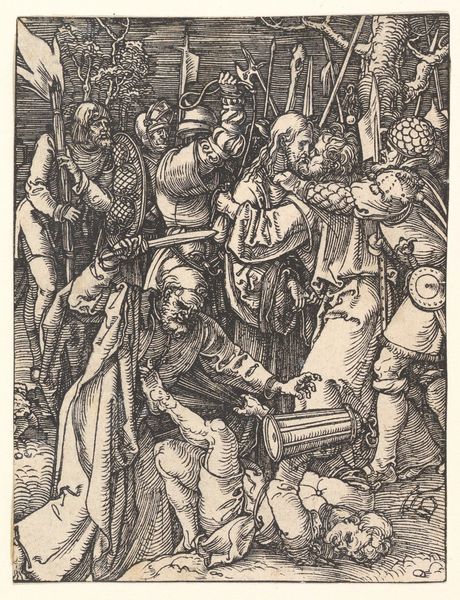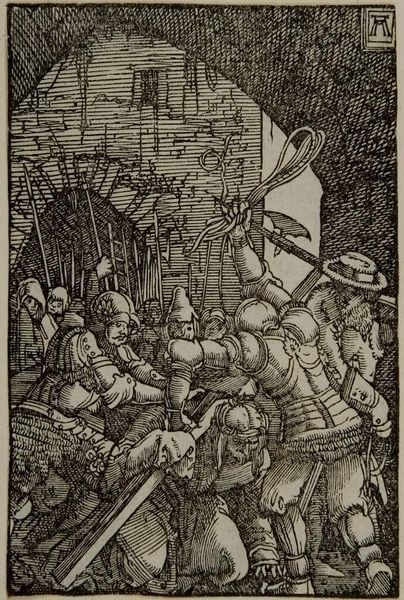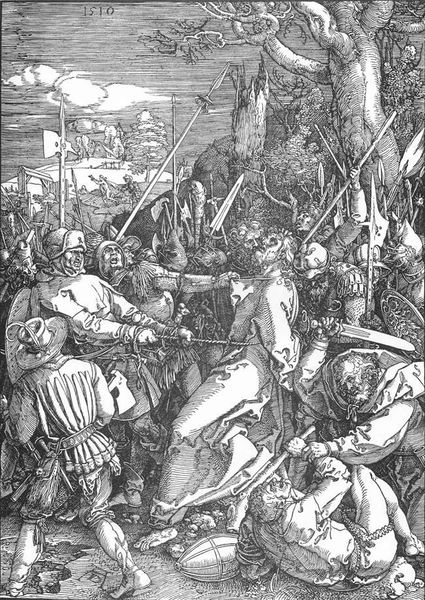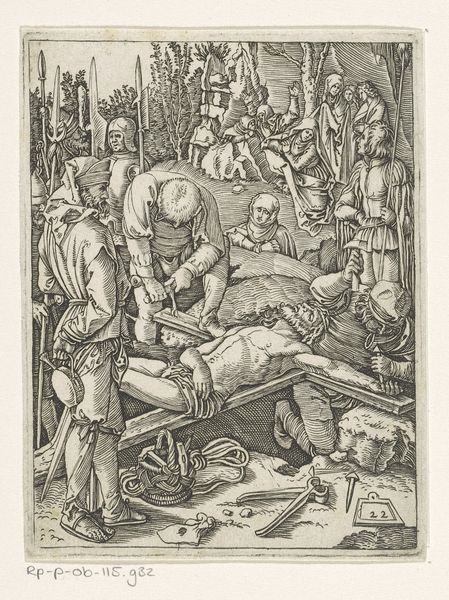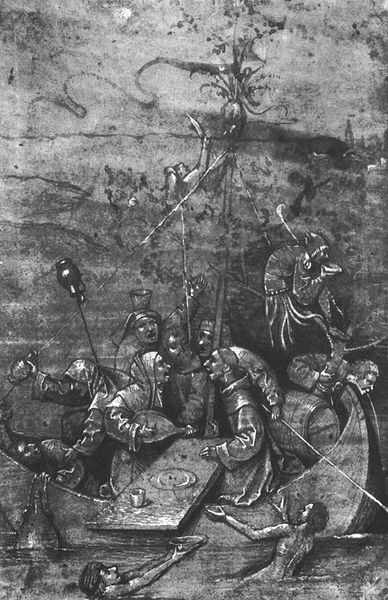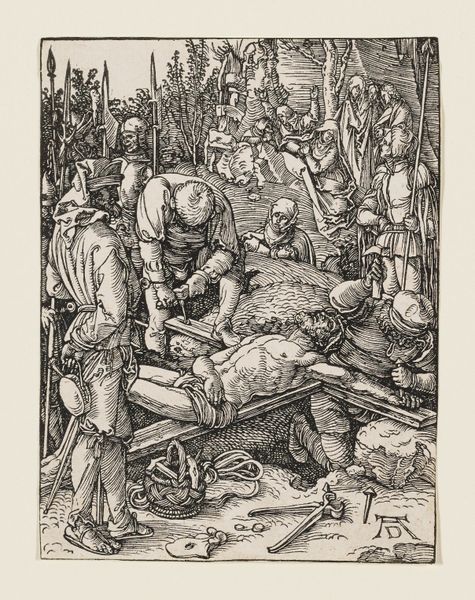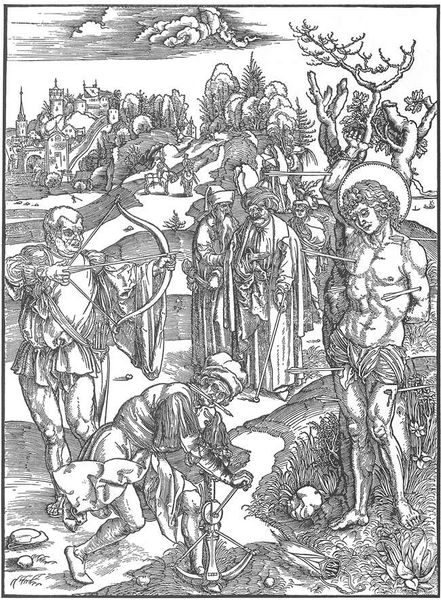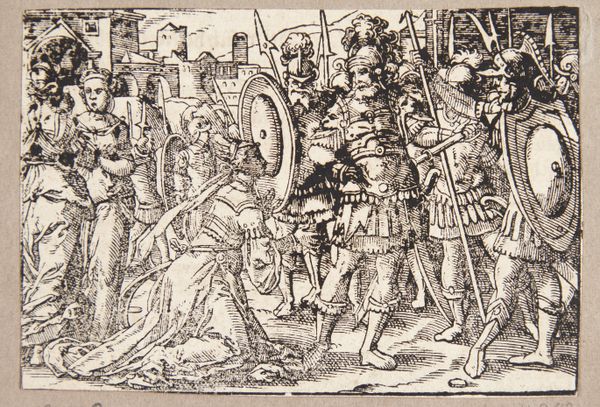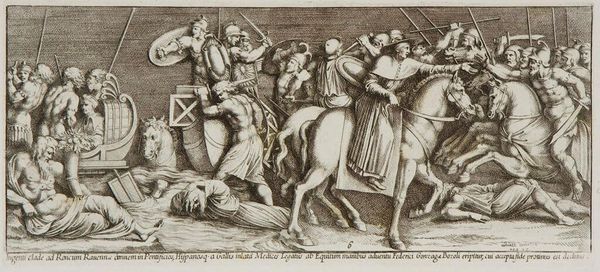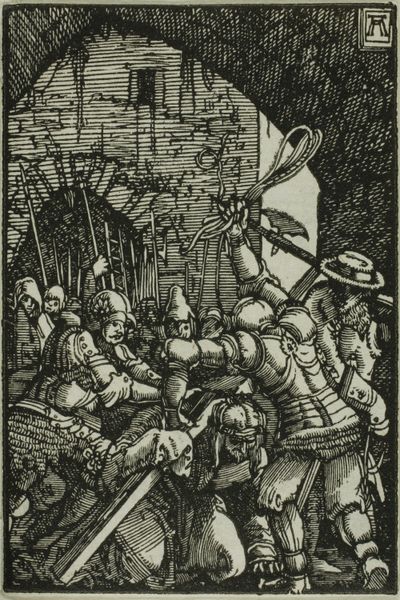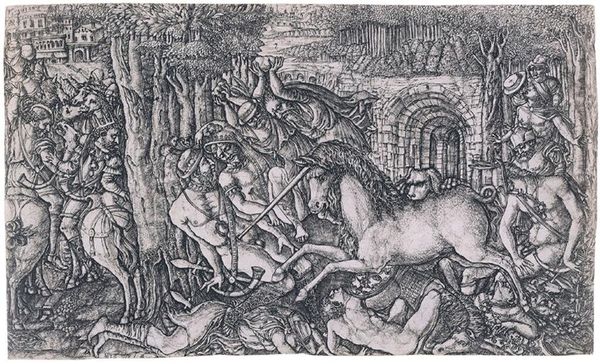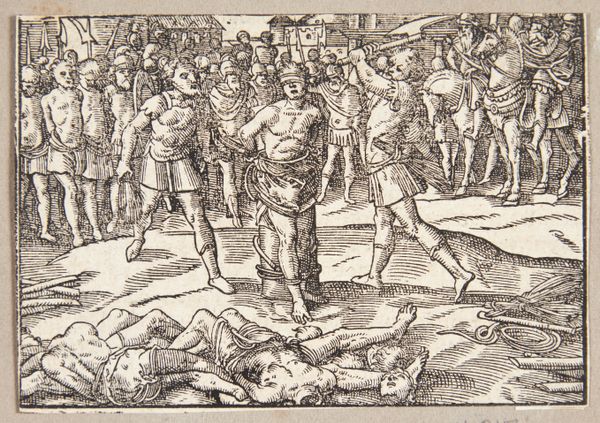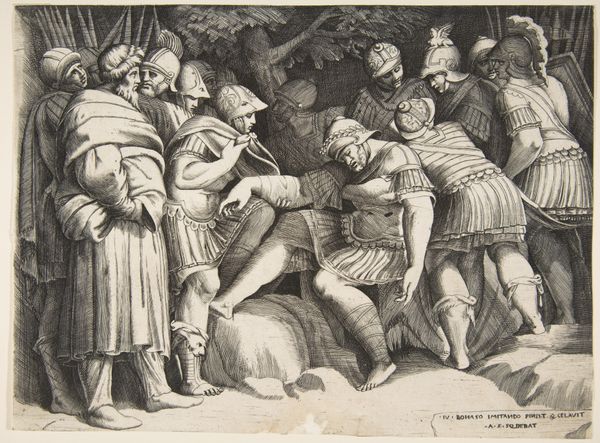
#
possibly oil pastel
#
handmade artwork painting
#
oil painting
#
naive art
#
painting painterly
#
watercolour illustration
#
chaotic composition
#
mixed media
#
watercolor
#
watercolur painting
Copyright: Public domain
Jean Fouquet painted this panel, "Martyrdom of St. Apollonia", in the 15th century, using tempera and oil on wood. The smooth surface and brilliant colors are achieved by carefully layering thin glazes of paint. Fouquet has used costly pigments such as ultramarine, ground from lapis lazuli, reflecting the patronage system of the time. The image is a riotous display of bodies, fabrics, and architecture. But the making of it would have been a slow, solitary process – quiet meditation on a violent scene. Note, too, the gilding on the shields. This adds literal value to the image, and also suggests the economic underpinnings of religious art. The entire scene is predicated on belief, but also on the skilled labor that makes belief visible, and the precious materials that make it valuable. Thinking about the painting in terms of its materiality and the labor involved allows us to appreciate the full depth of its meaning, and to reconsider what we mean by ‘fine art’ in the first place.
Comments
No comments
Be the first to comment and join the conversation on the ultimate creative platform.
